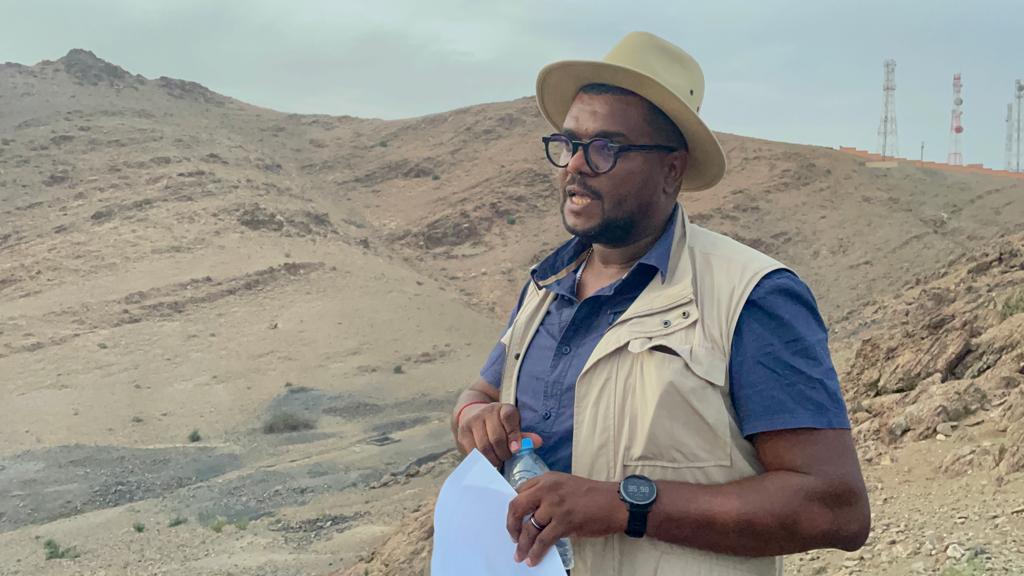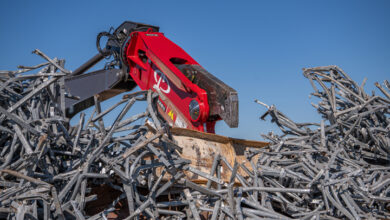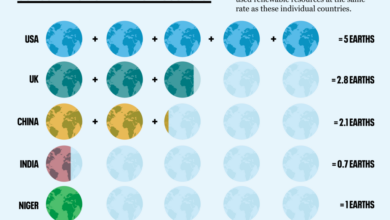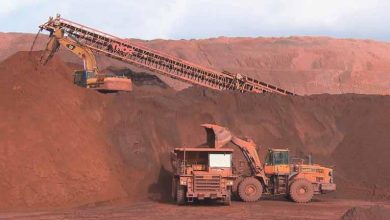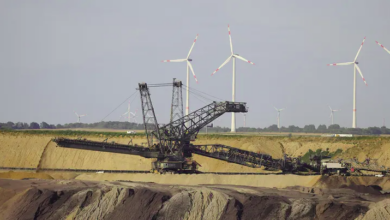Mines Géologie
Innovations in Mine Reclamation: Best Practices and Future Directions
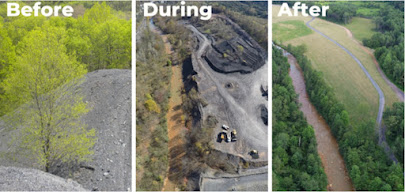
Mining is an essential part of the modern economy, providing the raw materials needed for the production of numerous products and technologies [1]. However, it also has a significant impact on the environment, affecting large areas of land and altering the natural landscape. Mine reclamation, the process of restoring land and the environment after mining has been completed, has become an increasingly important aspect of the industry [2]. The goal of reclamation is to make sure that mining has as little effect on the environment as possible and to put the land back to work.
I. Current Status of Mine Reclamation
The current state of mine reclamation is a mixed picture, with some successes and many ongoing challenges. According to the International Mining for Development Centre [3], approximately 10% of the world’s land area has been affected by mining, with an estimated 2 million hectares disturbed each year. The costs associated with reclamation can be significant, ranging from a few thousand dollars per hectare for simple reforestation, to millions of dollars for complex projects requiring the restoration of ecosystems and habitats.
Despite the challenges, there have been a number of successful mine reclamation projects in recent years, demonstrating the potential for the industry to minimize its impact on the environment. For example, the Mount Polley Mine in British Columbia, Canada [4], has implemented innovative reclamation techniques, including the use of local vegetation and the restoration of natural drainage systems, to return the land to productive use. The Rio Tinto Minerals Boron [5] Mine in California, USA, has also been recognized for its successful reclamation efforts, using a combination of reforestation, wetland restoration, and wildlife habitat enhancement to return the land to its natural state [6].
However, these successes are not universal, and many mining operations continue to struggle with the challenges of reclamation. In some cases, poor planning and preparation can lead to costly and ineffective reclamation efforts, while in others, the complexity of the task can make it difficult to achieve desired outcomes. More and more people also realize that the mining industry, government, and communities need to work together to make sure that reclamation practices are effective and lasting.
II. Innovations in mine reclamation
Innovations in mine reclamation are playing a critical role in reducing the impact of mining on the environment and promoting long-term sustainability. These innovations range from new technologies and techniques for restoring land and ecosystems, to new approaches to collaboration and stakeholder engagement.
One example of an innovative mine reclamation project is the use of phytoremediation [7], which involves using plants to remove contaminants from the soil and water. This technique is being used at a number of mine sites around the world, including the Summitville Mine in Colorado, USA [8], where the use of phytoremediation has been shown to be effective in removing heavy metals and other contaminants from the soil.
Another innovation in mine reclamation is the use of geomembranes [9], which are flexible barriers that are placed over contaminated soils to prevent the spread of pollutants. This technology is being used at a number of mine sites, including the Ok Tedi Mine in Papua New Guinea [10], where the use of geomembranes has been shown to be effective in reducing the impact of mining on local water sources [11].
In addition to technological innovations, there have also been significant advancements in the area of stakeholder engagement and collaboration. For example, the creation of mine closure and reclamation plans that involve the participation of local communities and other stakeholders is becoming increasingly common [12]. These plans help to ensure that the needs and concerns of all parties are taken into account, and that the reclamation process is transparent and accountable.
The use of virtual reality (VR) and other digital technologies is also increasingly being used to engage stakeholders and promote transparency in the reclamation process [13]. For example, VR can be used to create virtual tours of mine sites and to simulate the impact of reclamation efforts on the environment and local communities [14]. This technology helps to build trust and understanding between stakeholders, and ensures that all parties have access to the information they need to make informed decisions.
These innovations in mine reclamation demonstrate the potential of new technologies and approaches to reduce the impact of mining on the environment and promote long-term sustainability. They also emphasize how crucial stakeholder participation and cooperation are to the accomplishment of reclamation efforts. As a result, the advancements in mine reclamation are significantly lowering the negative environmental effects of mining and fostering long-term sustainability. From new technologies for restoring land and ecosystems, to new approaches to stakeholder engagement and collaboration, these innovations are providing new opportunities for reducing the impact of mining and promoting sustainability.
III. Best Practices in Mine Reclamation
Best practices in mine reclamation are those techniques and approaches that have been proven to be effective in reducing the impact of mining on the environment and returning land to a productive use. These practices can be as simple as replanting trees or as complicated as trying to fix ecosystems and habitats, but they all have the same goal: to reduce the damage caused by mining and make the area more sustainable in the long run.
One of the key best practices in mine reclamation is planning and preparation. This involves conducting thorough assessments of the land and the environment prior to mining and developing a comprehensive reclamation plan that takes into account the specific conditions of the site. The reclamation plan should include a clear timeline, detailed steps for reclamation, and a budget to ensure that the process is well-funded and managed.
Another important best practice is the use of native vegetation, which can help to reduce the impact of mining and promote the return of natural ecosystems. This may involve the use of specific plant species that are well-suited to the local environment or the introduction of new species to enhance biodiversity. In some cases, the use of natural processes such as erosion control and water management can also play a role in promoting the growth of vegetation and the restoration of ecosystems.
Collaboration between the mining industry, government [16], and communities [15] is also critical to the success of reclamation efforts. This could mean working together to figure out and deal with each site’s unique problems, sharing information and resources, and promoting openness and accountability throughout the process of reclaiming the land.
IV. Future Directions for Mine Reclamation
The field of mine reclamation is rapidly evolving, and new technologies, techniques, and approaches are constantly being developed to improve the process. The following are some of the key future directions for mine reclamation:
- Increased use of renewable energy: There is a growing trend towards the use of renewable energy in mine reclamation, as mining companies look for ways to reduce their carbon footprint and promote sustainability. For example, some mining companies are exploring the use of wind and solar energy to power their operations, and others are looking at ways to harness geothermal energy for mine site heating and cooling.
- Greater use of sustainable materials: Another trend in mine reclamation is the increased use of sustainable materials, such as recycled concrete and wood, to build structures and features on reclaimed land. This helps to reduce the impact of mining on the environment and promote the use of environmentally-friendly materials.
- Improved monitoring and assessment: New technologies and approaches are being developed to improve the monitoring and assessment of reclamation efforts, to ensure that they are meeting their goals and achieving the desired outcomes. For example, the use of remote sensing and geospatial technologies is becoming increasingly common in mine reclamation, allowing for more accurate and timely monitoring of reclamation progress.
- Increased focus on stakeholder engagement: The importance of stakeholder engagement and collaboration in mine reclamation is likely to continue to grow in the coming years, as the needs and concerns of local communities and other stakeholders become increasingly important. For example, some mining companies are working with local communities to develop reforestation plans that incorporate traditional knowledge and practices, to ensure that the reclamation process is culturally sensitive and sustainable.
- Integration with wider sustainability initiatives: mine reclamation is increasingly being integrated with wider sustainability initiatives, such as carbon capture and storage (CCS) and biodiversity conservation. For example, some mining companies are exploring the use of reforested land for carbon sequestration or for the creation of new wildlife habitats.
These are just a few of the future directions for mine reclamation, and they demonstrate the ongoing commitment of the mining industry to reduce its impact on the environment and promote long-term sustainability. The mining industry can continue to minimize its environmental impact and promote a sustainable future by adopting these new technologies, techniques, and approaches.
Conclusion
In conclusion, mine reclamation is a critical component of the mining industry and is essential for ensuring that the impact of mining on the environment is minimized. With the field of mine reclamation constantly evolving, there are many new and innovative technologies, techniques, and approaches being developed to improve the process. From increased use of renewable energy and sustainable materials to improved monitoring and assessment and increased stakeholder engagement, the future of mine reclamation looks bright and promising. By embracing these new directions, the mining industry can continue to promote sustainability and protect the environment for future generations.
Bibliography
[1]Murck. « Sustainable development in the mining industry: clarifying the corporate perspective Barbara, Resources policy 26 no, (2000).
[2]S.S. A., Poonia. « Soil reclamation of abandoned mine land by revegetation: a review P., International journal of soil sediment and water 3 no, (2010).
[3]D. Franks, Social impact assessment of resource projects, (2012).
[4]B. C., J.D. S., D.Anglin. « Geochemistry of tailings from the mount P. mine C., columbia. » I.P.T. and M.W. ish, 25, (2016).
[5]G. « An introduction to boron: history William, Environmental health perspectives 102 no, (1994).
[6]R. Amanda, L. Chunguang, K. Yuriko, W. Josephine, D. Harvey, F. Roger, Terry. « Evaluation of the boron tolerant grass Norman, distans Puccinellia, an initial vegetative cover for the phytorestoration of a boron-contaminated mining site in southern C. as, Environmental science technology 45 no, (2011).
[7]Elizabeth. « Phytoremediation. » Annu.R. Pilon-Smits, Plant Biol, (2005).
[8]all Emile Chris Oswalt and Cat Shrier, (2000).
[9]J. A., E.Smith. « Overview of geomembrane history in the mining industry. » I.P. 8th I.C. on G. M., 345349, (2006).
[10]M. Mining, Mining for the Future Appendix A Large Volume Waste, (2002).
[11]I. G., L. B., Environmental impact of mining waste disposal on a tropical lowland river system a case study on the Ok Tedi Mine Papua New Guinea, (1997).
[12] »Indigenous movements and the risks of counterglobalization: tracking the campaign against Papua New Guinea’s Ok Tedi mine rt., American ethnologist 34 no, (2007).
[13]M.C. Sandra, G. Joao, A. Faizan, 20 years of research on virtual reality and augmented reality in tourism context A textmining approach, (2020).
[14] »Utilization of augmented and virtual reality technologies in geoscience and mining won., Journal of the Korean Society of Mineral and Energy Resources Engineers 56 no, (2019).
[15]M. Marcello, S. Malcolm, L.McAllister. « Mining with communities. » I.N.R.F. Mary, 25 vol., 3 no., 191202, (2001).
[16] »Sustainable development policies in Canada’s mining sector: an overview of government and industry efforts n., Environmental Science Policy 3 no, (2000).
[17]H.-E. Karen, M. Mark, B. Paul, B. Graham, Williams. « The long-term environmental impacts of the M.P. mine tailings spill Richard, C. British, In EGU General Assembly Conference Abstracts p, (6241).
[18]Y. Kayama, Treatments of severely boroncontaminated soils for phytorestoration, (2010).
[19]Geoff. « Innovation in mining: R.T.M. of the F. (TM) programme Bearne, Aluminium International Today 26 no, (2014).
DAAFI Youssef
CPG-AIPG, EurGeol-EFG, QP-MMSA, RM-SME & FWAIMM
https://www.linkedin.com/in/youssef-daafi-72622825/
